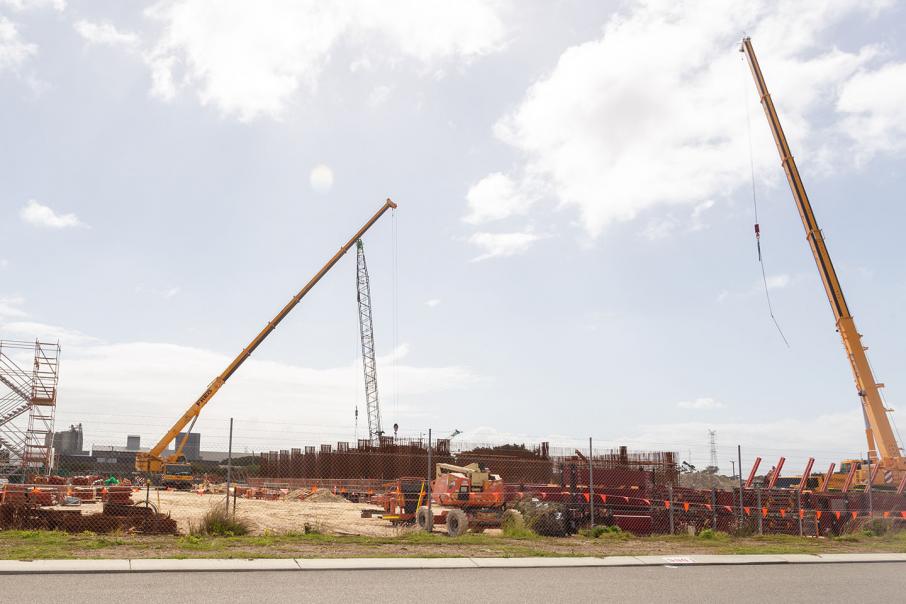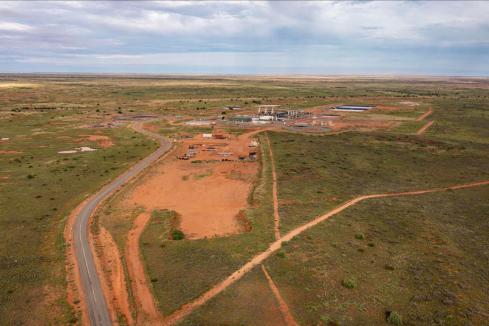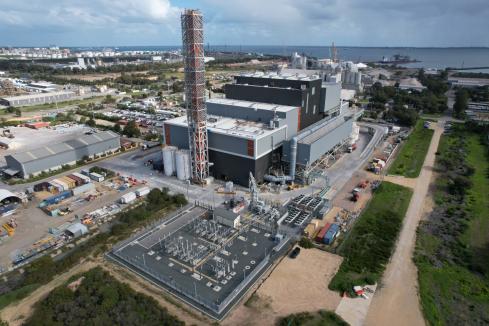SPECIAL REPORT: Gas peaking generation and utility scale batteries will become increasingly valuable in WA as coal power units are retired and new wind farms come online.


Gas peaking generation and utility scale batteries will become increasingly valuable in WA as coal power units are retired and new wind farms come online.
It is instructive to compare how two of Western Australia’s biggest energy businesses are managing the transition to renewable power.
Both Alinta Energy and Synergy are constructing big new wind farms in the Mid West; two of the largest projects on the Business News list of $2.6 billion of energy investments under way or in the pipeline.
Synergy’s Warradarge project will have a nameplate capacity of 180 megawatts, coming at an estimated cost of $500 million, and is being built by Vestas.
The government enterprise is funding the project through a joint venture with CBUS Super and Dutch Infrastructure Fund, and will offtake all the electricity when completed next year.
(click here to see a PDF version of the full special report)
Alinta’s Yandin wind farm will supply 214MW from mid-2020, and will be built by Vestas at a cost of $400 million.
But the big contrast is what will happen with the rest of their portfolios.
Wind farms are intermittent in their supply of power, so their actual output only occasionally reaches nameplate capacity.
This explains why Yandin was allocated less than 50MW of capacity credits by the Australian Energy Market Operator, although Alinta claims a long-term capacity factor of more than 50 per cent, which means it will average output at above half nameplate capacity.

Photo: Gabriel Oliveira

Image: Ten Mile Lagoon Wind Farm. Photo: Gabriel Oliveira
The intermittency has a flow-on impact.
Early last month, the state government set a long-awaited timeframe for the closure of two coal generation units at Synergy’s Muja power station.
The first unit will exit the market in October 2022, with the second to follow two years later.
Together they will take about 388MW out of the South West Interconnected System.
It had been expected the units would be retired closer to the end of the 2020s.
The penetration of renewables into the market is displacing coal early because coal generation does not easily adjust output to accommodate the intermittency of solar power and wind.
The Muja C units, for example, take about 50 minutes to turn fully on or off, according to the Australian Energy Market Operator.
A practical example of this competition between renewables and coal occurred in January, when two coal units were turned off because of a high level of wind generation across the system.
The state government estimated leaving Muja on beyond the new timeline would cost $350 million.
Alinta Energy, which is the second biggest power generator in WA by capacity, will be less impacted by the transition because most of its existing generation is from gas.
The company operates two gas turbines at Pinjarra, each with about 135MW capacity, and two at Wagerup of 196MW per unit.
The Pinjarra turbines can ramp-up to full capacity in about 14 minutes.
Alinta Energy general manager WA Chris Campbell said that capability would support Yandin.
“Gas-fired generation is a very good complement to the intermittency of renewables, so we’re in a good position to really firm-up the renewables,” Mr Campbell told Business News.
“We’re probably fortunate here in WA that we do have a good amount of gas-fired generation in the market, so we can go down this road of more renewables in the system.”


Mr Campbell said wind power was competitive against traditional power sources.
“We’re really blessed with a great wind resource here in WA, great renewable resources,” he said.
“It is more competitive than coal-fired power or gas-fired power in the long term. It is really the lowest cost form of energy we can bring to market.
“Yandin … will be the biggest contributor to renewables here.
“It probably represents about 5 per cent of the energy consumed in the SWIS.”
In addition to Yandin, Alinta has a power offtake arrangement with the 130MW Badgingarra wind farm, operated by APA Group, which electrified in January.

Step on the gas
WestGen director Richard Harris said the market welcomed the clear timetable for the closure of Muja C.
He said as coal exited the market, it would likely be replaced with more gas and batteries.
New gas-fired capacity would be required in about five years, Mr Harris said, meaning investors would need to start fleshing out projects. A couple of key reforms would need to be made first, however.
“Somebody better start thinking about it soon,” Mr Harris said.
“A number of players in the market have identified that need (for gas power capacity).
“We don’t want to get to the point the only player that can build it is Synergy because the right signals are not there to make that private investment.”
Two important changes being considered by policy makers were reform of the capacity market and the introduction of a new ancillary services market, he said.
The capacity market pays generators a fee to be present in the system regardless of their output, to ensure enough facilities are built to cover demand peaks.
“They’re looking at just tweaking [the capacity market] to give more long-term certainty about an investment … locking in capacity over a period of time,” Mr Harris said.
“From an investment point of view you can go to a bank and say, ‘I’m going to get revenue from ancillary services and capacity for the next 10 years’, and the bank can then lend you money to build that project.”
Merredin Energy chair Jon Biesse said the company’s gas peaking plant, an 82MW facility, would be of value in the changing market.
Moves to clear up the regulatory structure would be welcome, Mr Biesse told Business News.
“The constant uncertainty and change equal risk for investors,” he said.
“The market has just been basically uninvestable and unbankable for the past five years, and we still don’t have complete clarity.
“There’s talk about putting more peak power in, but you can’t invest in the market at scale at the moment.
“We’ll get some clarity shortly; we’re very close to the end, but it’s been a pain.”
Mr Biesse said the changes to the capacity market would be of most benefit.
“When we built the power station the capacity price was $186,000 a megawatt, and now we’re looking sub $100,000 10 years later,” he said.
“Providing 10 years’ of a range of pricing, which is what they’re proposing, is going to enable banks to model this industry and model returns and enable investors to also.”
A second move under consideration by the state’s Energy Transformation Taskforce is an ancillary services market to incentivise provision of additional services on the grid, such as voltage control and spinning reserves.
That is becoming necessary as the proliferation of rooftop solar panels adds pressure to the network, with about 280,000 units installed in WA as of December 2018.
The grid is intended to operate at around 240 volts, but that can rise to as much as 258 volts when rooftop solar powers-up on sunny days.
The increase in voltage puts pressure on transformers across the network.
Mr Harris said batteries would be part of the solution to this problem, and an ancillary services market would be the most efficient mechanism to support development of distributed, utility scale battery projects.
“Battery technology is getting to the point it’s getting quite cost competitive, (it’s also) a bit more flexible,” he said.
“I don’t see government setting up any subsidy mechanism. It just needs the right mechanism to get paid for what you actually deliver.”
A battery will also be part of Westgen’s Byford solar project, a $100 million development with 30MW of solar and a 10MW battery.
“We always designed the solar farm to include a large-scale battery at some point,” Mr Harris said.
“We’re now fast tracking that because it seems to us to make sense now.”
Rooftop solar panels have also meant that peak power usage has moved to be later in the day.
“If you don’t put a battery in, your solar farm doesn’t make sense any more,” Mr Harris said.
“That has come sooner than anyone anticipated.”
The Byford project is moving through engineering and financing, and Mr Harris was hopeful it would be under construction before the year is out.
Alinta’s Mr Campbell also saw an increased role for storage in the local market.
“Over time those things (battery, pumped storage) are becoming more competitive,” Mr Campbell said.
“There’s definitely a place in electricity systems to look at alternative technology to supply firm energy and also provide other ancillary services.”
He cited the example of Alinta’s 30MW (11.4MW/hour) battery at Newman, supporting an iron ore mining operation.
Mr Campbell said the battery had firmed supply, improved efficiency of generation and added to network stability.
But he added that WA’s market was functioning better than the National Electricity Market on the east coast.
“We’re really fortunate here that we’ve had pretty stable policy for quite some time,” Mr Campbell said.
“That’s led to a market that’s really operating very well, particularly if you contrast it with the east coast where obviously there are challenges.”
Other projects
The Alinta and Synergy wind farms are among five big power projects in WA, two of which are waste-to-energy plants.
More than $1 billion is being spent on Macquarie Capital’s Avertas Energy project and the East Rockingham Resource Recovery Facility, which is owned by a venture including Hitachi, New Energy Corporation and Tribe Infrastructure Group.
Acciona was chosen as the contractor for the East Rockingham facility in late August, with construction to start by the end of the year.
The contractor is already at work at the Avertas project.
In the solar field, two projects are under way and two have stalled.
The biggest is Risen Energy’s Merredin solar farm, which Risen purchased from Stellata Energy late in 2018.
Construction works for the 132MW facility began in July, the company said.



















